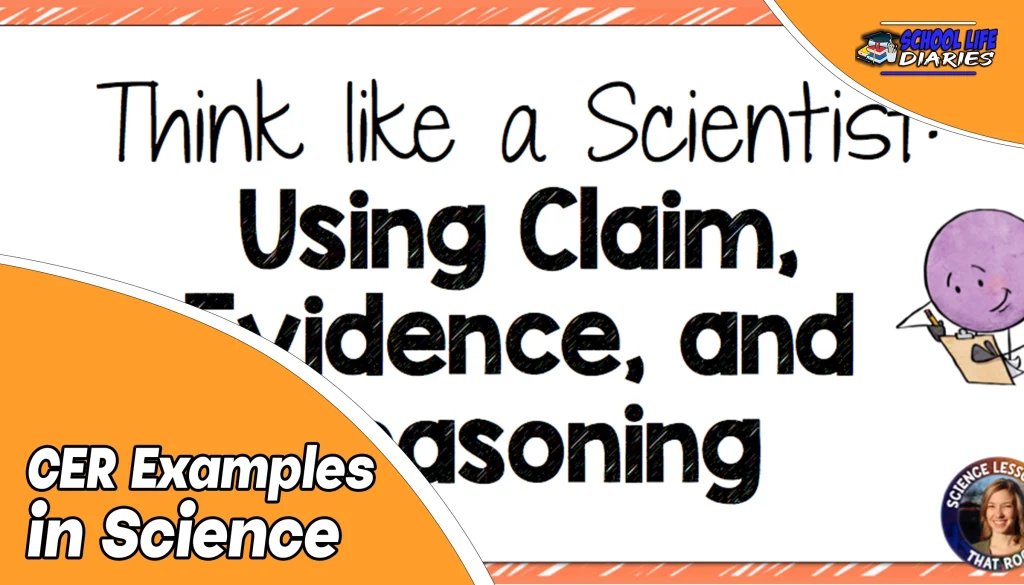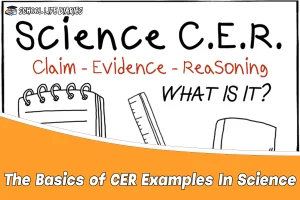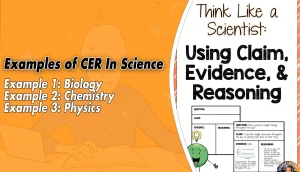CER (Claim, Evidence, Reasoning) is a well-known scientific method to help students learn how to write scientific explanations. It is a structured approach that guides students to develop scientific thinking skills, critical thinking skills, and scientific writing skills.
CER examples in science can be found in various subjects such as biology, chemistry, physics, and earth science. In this article, we will explore CER examples in science, including the basics, the benefits, and some practical examples.
The Basics of CER Examples In Science
CER is a structured approach that helps students develop scientific explanations. It consists of three parts: claim, evidence, and reasoning.
The claim is the statement that answers the question or problem being investigated. The evidence is the data or observations that support the claim. Reasoning is the explanation of how the evidence supports the claim.
The Importance of CER Examples In Science
CER examples in science are important because they:
- Help students develop scientific thinking skills
- Encourage critical thinking skills
- Help students write clear, concise, and effective scientific explanations
- Allow for peer evaluation and feedback
How To Write a CER Example In Science?
To write a CER example in science, follow these steps:
1. Start with a question or problem.
2. Write a claim that answers the question or problem.
3. Gather evidence to support the claim.
4. Analyze the evidence to identify patterns or relationships.
5. Write a reasoning statement that explains how the evidence supports the claim.
Examples of CER In Science
Here are some examples of CER in science:
Example 1: Biology
Question:
What is the effect of temperature on the rate of photosynthesis in plants?
Claim:
If the temperature of the environment increases, then the rate of photosynthesis in plants will also increase.
Evidence:
- Conducted an experiment to measure the rate of photosynthesis at different temperatures.
- Collected data on the rate of photosynthesis at each temperature.
Reasoning:
- As the temperature increased, the rate of photosynthesis also increased.
- This is because the enzymes responsible for photosynthesis work more efficiently at higher temperatures.
Example 2: Chemistry
Question:
What is the effect of pH on the reaction rate of an enzyme-catalyzed reaction?
Claim:
If the pH of the environment is close to the optimal pH for the enzyme, then the reaction rate will be highest.
Evidence:
- Conducted an experiment to measure the reaction rate of the enzyme-catalyzed reaction at different pH levels.
- Collected data on the reaction rate at each pH level.
Reasoning:
- At the optimal pH for the enzyme, the reaction rate was the highest.
- This is because the enzyme’s active site is most receptive to the substrate at this pH.
Example 3: Physics
Question:
What is the effect of mass on the acceleration of an object?
Claim:
If the mass of the object is increased, then the acceleration of the object will decrease.
Evidence:
- Conducted an experiment to measure the acceleration of different objects with different masses.
- Collected data on the acceleration of each object.
Reasoning:
- As the mass of the object increased, the acceleration decreased.
- This is because the force required to move an object is directly proportional to its mass.
What Are The Benefits of CER?
1. Develops Scientific Thinking Skills:
CER encourages students to think scientifically by requiring them to develop a claim, gather evidence, and use reasoning to support their claim. This process helps students learn how to think critically, evaluate evidence, and draw conclusions based on that evidence.
2. Enhances Writing Skills:
CER requires students to communicate their scientific explanations in a clear and concise manner, which helps them develop their scientific writing skills. This is an important skill for success in both academic and professional settings.
3. Encourages Peer Evaluation and Feedback:
When students share their CER explanations with their peers, they are able to receive feedback on their work and learn from others. This process helps students develop their communication skills and learn how to work collaboratively with others.
4. Improves Understanding of Scientific Concepts:
By requiring students to develop well-supported explanations, CER helps them gain a deeper understanding of scientific concepts. This is because the process of developing a claim, gathering evidence, and using reasoning to support that claim helps students connect scientific concepts to real-world phenomena.
5. Promotes Scientific Literacy:
CER helps students develop their scientific literacy by teaching them how to understand and apply scientific concepts. This is an important skill for success in our modern, technology-driven world.
6. Encourages Creativity:
While CER provides a structured approach to scientific explanation, it also encourages students to think creatively about scientific concepts. This is because students must use their own reasoning to develop an explanation that is supported by evidence.
Related Article: Most Difficult Exams In The World: Challenging The Best Minds
FAQs:
1. What is CER in science?
CER (Claim, Evidence, Reasoning) is a structured approach that
2. How can CER examples benefit students?
CER examples can help students develop scientific thinking skills, critical thinking skills, and scientific writing skills. They can also encourage peer evaluation and feedback.
3. What subjects can CER examples be used in?
CER examples can be used in various subjects such as biology, chemistry, physics, and earth science.
4. How can teachers incorporate CER examples into their lesson plans?
Teachers can incorporate CER examples into their lesson plans by providing students with a question or problem to investigate, guiding them to write a claim, gather evidence, and develop a reasoning statement.
Conclusion:
CER examples in science are a structured approach that can help students develop scientific thinking skills, critical thinking skills, and scientific writing skills. They encourage peer evaluation and feedback and can be used in various subjects such as biology, chemistry, physics, and earth science.
By following the basic steps of CER, students can write clear, concise, and effective scientific explanations that are supported by evidence. Incorporating examples into lesson plans can help teachers improve student understanding of scientific concepts and promote scientific literacy.







